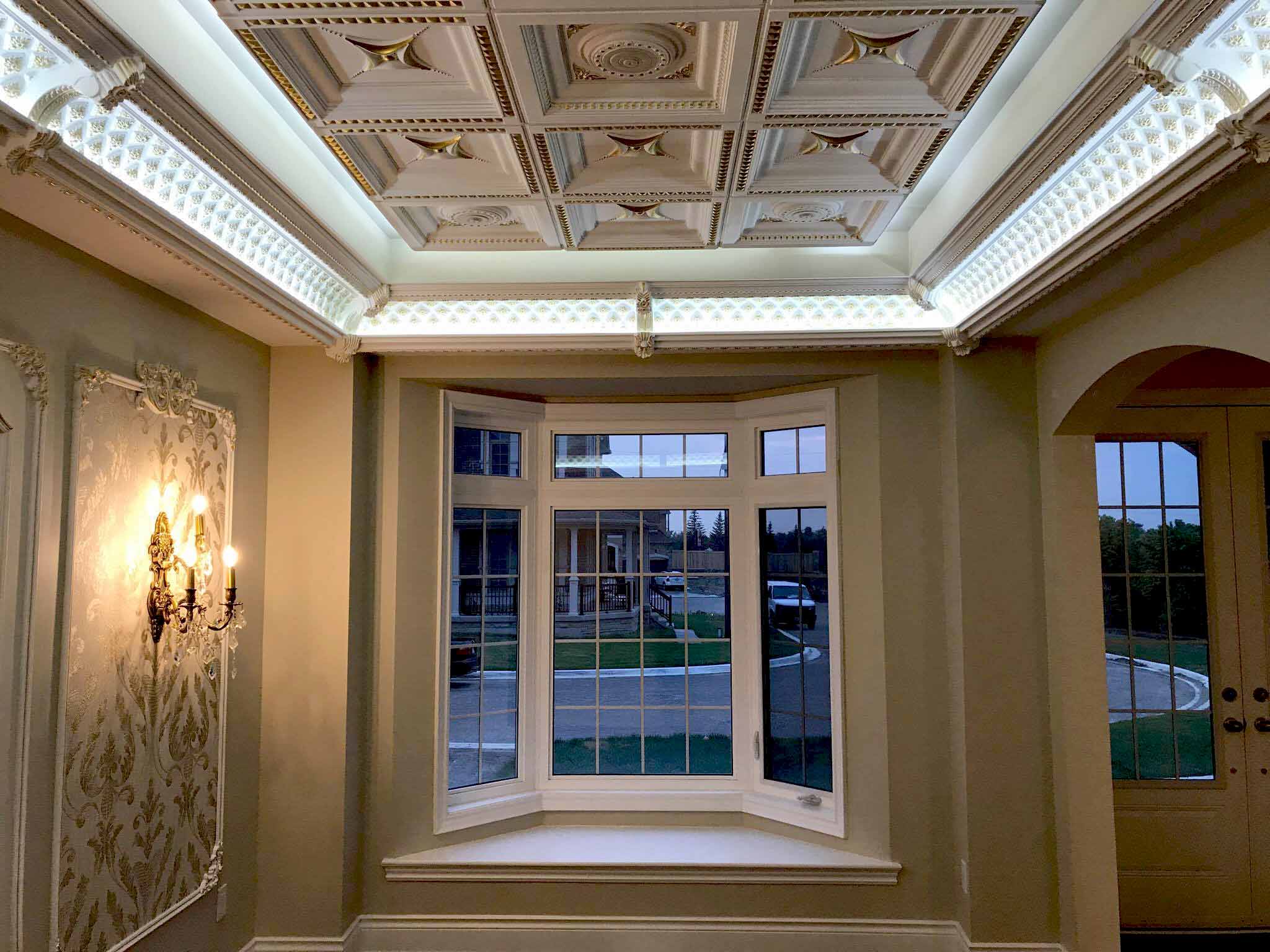
Drop Ceiling Ideas & Designs
Drop ceilings are an amazing way to add depth to a ceiling, especially for rooms with a height greater than 8 feet. They add some complexity to a plain ceiling that would otherwise get no attention. It’s easy to see why the dropped ceiling is becoming a trend with modern decorators. Nowadays, you can find them everywhere from luxury hotels to restaurants to mansions that want to show off a little character and prestige. Usually these ceilings are accompanied by other accessories that help them pop. For example, you might find led strip lights, pot lights, or a chandelier to bring the design to the next level. Whichever way you do it, it’s important to make your drop ceiling radiate and become the center of attention.
What is a Dropped Ceiling?
The drop ceiling, also known as the t-bar ceiling, false ceiling, suspended ceiling, grid ceiling, or drop down ceiling is an effect where a secondary ceiling usually hangs below the structural ceiling to create a layered effect. There are many ways in which the secondary ceiling can be set, so you can find a wide variety of designs that all look and feel unique. Two examples we like to use at Lux Trim are the center drop effect and the center raise effect. Just as the phrases suggest, the first is where the suspended area is in the middle and rests below the structural ceiling. The second is where the perimeter is dropped, making it look as though the ceiling were raised.
How do we make a Drop Ceiling?
The most common method of making a dropped ceiling is the suspension grid method. This involves building a metal casing that rests below the structural ceiling. Tiles are then placed to fill up the spaces of the grid and complete the look. The benefit of this method is that the original ceiling remains intact, making it a bit easier to disassemble in the future. The drawbacks however are the time and money investment that is needed to build the grid, and that it only supports tiled structures. At Lux Trim, we use a different method entirely. We build a supporting structure out of drywall to extend the natural lines of the ceiling. We then glue our many different elements on the ceiling and drywalled areas. Using the grid method would make it impossible to add all the different layers and effects that we use in our designs.
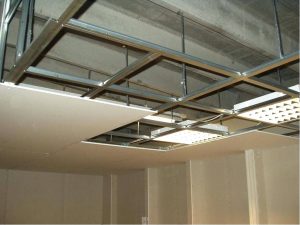
Traditional Suspension Grid Method
The Suspended Look
When our team builds drywall around the perimeter of the ceiling (the ceiling raise effect) and combines this with coffered tiles, we get a totally different composition. Here are a few pictures of this “suspended” look that we are talking about. Combined with led strip lights, this piece becomes a real masterpiece!
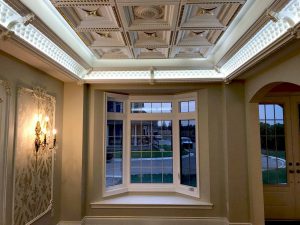
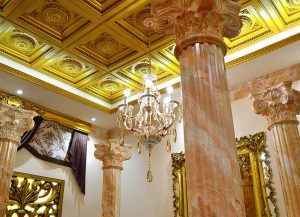
Photos from Lux Trim Projects
Drop with Flat Tiles
Alternatively, you can choose the flat tile option to get the full raised effect. Take a look at how the light from the LED’s emanates and reflects off of the antique silver tiles. Paired with a chandelier, this look is another fantastic option.
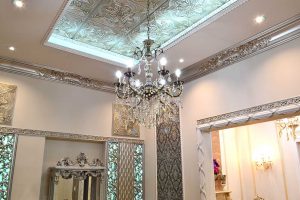
Drywall Layering
For taller ceilings and grand displays, we can go with multiple drywall layers. In these projects, the middle of the ceiling appears to be raised, while the outer edges are dropped. Although this display takes about a foot and a half away from the height of the room, it’s a really powerful look.
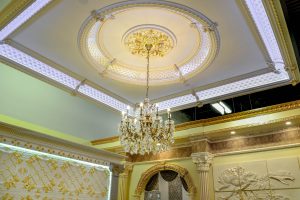
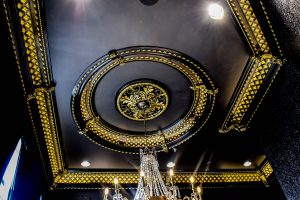
Feeling inspired? Head over to our ceiling design page to learn about the Lux Trim way of creating spectacular ceilings. For more of our projects, check out our Lux Trim Projects page on Houzz, or for more inspiration check out our Drop ceiling ideabook.

